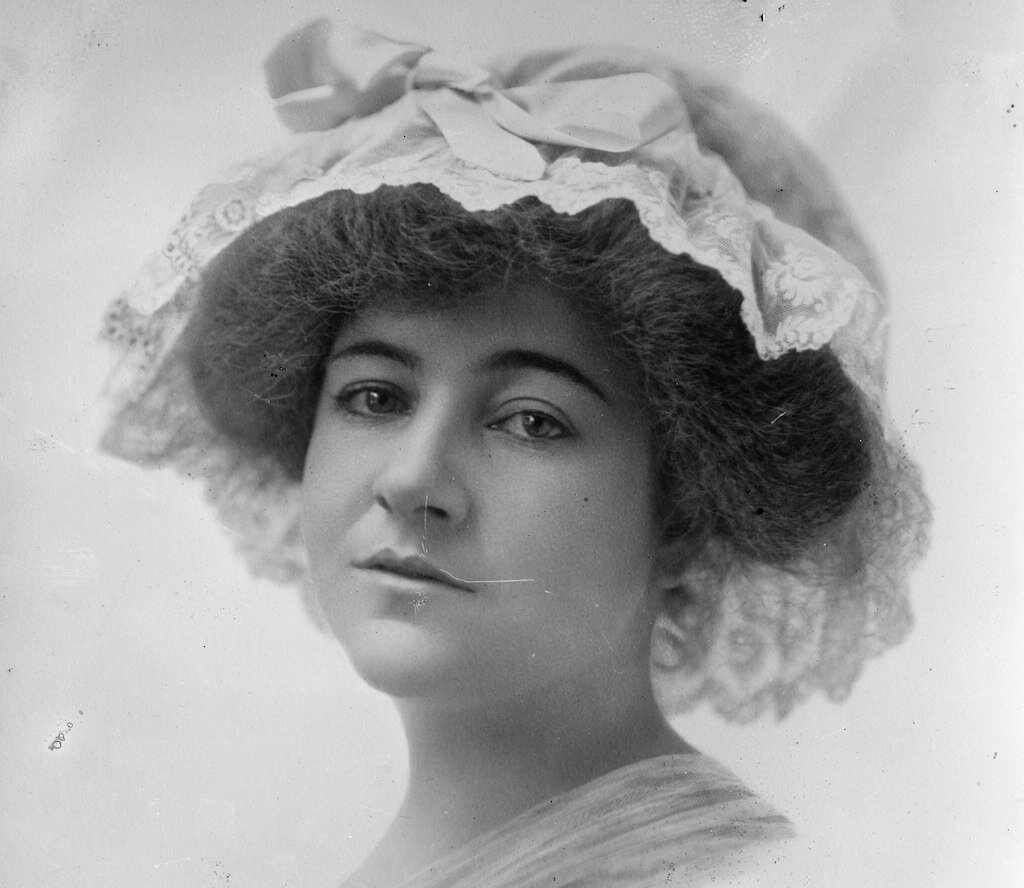I don't think there is something new here


Premium
The missing heiress at the center of New York’s oldest cold case
For the first time in more than a century, the family of Dorothy Arnold breaks silence to reveal new insights.
New York City heiress Dorothy Arnold's mysterious disappearance more than a century ago set off a media frenzy—particularly as surprising details ab...Read More
Photograph by Fay 2018, Alamy
ByRosemary Counter
May 30, 2024
On an icy Monday morning in December 1910, 25-year-old socialite Dorothy Arnold left her Upper East Side mansion to go dress shopping for her little sister Marjorie’s upcoming debutante ball. She told a friend she was shopping with her mother, and told her mother she’d rather shop alone.
The eldest daughter of the high-society Arnolds, a rich and well-connected family with old roots tracing back to the Mayflower, Dorothy casually carried $30 in cash (almost $1,000 in today’s money) and dressed to the height of New York fashion. She left her clothes, jewels, and passport at home.
By all accounts in good spirits, Dorothy bought a humor book and a half-pound box of chocolates, charging both to her father’s accounts. Just before 2 p.m. at the corner of 27th Street and Fifth Avenue, Dorothy bumped into a friend for a short but lively chat, where she casually mentioned plans to stroll home through Central Park. Then she waved goodbye to her chum and disappeared forever.
Today the oldest missing person’s case in New York City, the sensational disappearance of Dorothy Harriet Camille Arnold has mystified detectives and citizens ever since. But none more so than her own family, perhaps, whose living descendants learned about her case like everyone else.
The last place anyone saw socialite Dorothy Arnold was right here at the corner of Fifth Avenue and 27th Street in New York City. She ran into a friend while o...Read More
Photograph by Historic Images, Alamy
(
This is how you solve one of history's greatest cold cases.)
“I was in my 30s when I read ‘
The Justice Story’ in the
Sunday Daily News that featured the case,” recalls Jane Vollmer, Dorothy’s great-niece. She recognized her family name, made the connection, and asked her father.
Then and now, the Arnold family only reluctantly speaks about Dorothy. Vollmer’s mother, Rebecca, born five years after Dorothy’s disappearance, had never spoken about it as far as anyone knows. No public statement has been made in more than a century—until now, and Vollmer suspects this one has her ancestor rolling in her grave. “My grandmother would be absolutely horrified to have all this dug up a hundred years later.”
The strange disappearance of Dorothy Arnold
The Arnold family knew something was amiss when Dorothy didn’t return home for dinner. When she hadn’t returned by nightfall, they called around to friends. And when she was still missing in the morning, the Arnolds hired a lawyer and a team of private investigators from the Pinkerton Agency. They didn’t call the police, however, for six weeks.
Whether or not the above sounds suspicious depends on who you ask—and when. “I think the attitude about the police was that they were for drunks, immigrants, and criminals,” says Vollmer. Her younger brother, now 67-year-old Mark Vollmer, concurs: “We take for granted now that
of course you’d call the police,” he says, “but people were very private back then.”
Worse than the police, probably, was the media, whose rampant speculations would be—and ultimately were—socially devastating.
But when Pinkerton detectives came up empty, patriarch Francis Rose Arnold reluctantly called the New York Police Department and held a press conference on January 25. He described Dorothy in detail: 5 foot 4, 140 pounds, pretty and stylish in an ankle-length navy dress and velvet hat atop her “full pompadour.” He offered a hefty reward of $1,000 (about $33,000 today) for any information that led to her whereabouts.
(
Has science solved one of history's greatest adventure mysteries?)
The next day, Dorothy Arnold’s disappearance landed on the front page of the
New York Times. Though her father was “prostrated with grief and worry” and her mother “on the verge of nervous collapse,”
the article noted that police believed Dorothy had run away to marry rather than foul play or suicide. “There is no trace of insanity in the family, and the young woman had never shown signs of a troubled mind, although she was devoted to books and spoke several languages.”
Indeed, Dorothy Arnold wasn’t like most girls of her era and status. A recent literature graduate of Bryn Mawr College, a liberal college in Philadelphia, Dorothy aspired to more than marriage; she wanted to become a writer and had been (unsuccessfully) submitting short stories to
McClure’
s magazine. She’d asked for a studio apartment in bohemian Greenwich Village, a move her father forbade, and when her family mocked her writerly efforts, she used her ample allowance for a private post office box.
The Arnold family was initially reluctant to inform the police about Dorothy's disappearance—fearing a media frenzy and social ruin. When they finally di...Read More
Photograph by New York Tribune
“Miss Arnold was not of a secretive nature,” the
Times wrote. “Although she has been admired by many young men, a representative of the family said last night that she had never been engaged, as far as they knew.” Whether her family knew it or not, Dorothy hid plenty of secrets and the press was about to go digging.
The secrets of Dorothy Arnold
On February 15, the
Daily News dropped a bombshell: The September before she went missing, Dorothy had pawned her jewelry to fund a weeklong liaison in Boston’s Hotel Essex. Though she’d told her family she was visiting a girlfriend in Cambridge, really Dorothy was with George S. Griscom Jr., a 40-year-old unemployed bachelor from Pittsburgh whom she’d been secretly seeing since her days at Bryn Mawr.
Among his many improprieties, Griscom had an embarrassing broken engagement to another rich heiress, who called off the wedding the night before. Friends said Griscom had proposed marriage to Dorothy as well, but her father staunchly disapproved of the match.
You May Also Like
 HISTORY & CULTURE
HISTORY & CULTURE
 HISTORY MAGAZINE
HISTORY MAGAZINE
 HISTORY & CULTURE
HISTORY & CULTURE
The Arnolds denied it all, but it was revealed that Dorothy’s mother and older brother, John, had sailed to Europe weeks earlier to find and physically confront her boyfriend. (“Griscom licked by young Arnold in foreign hotel,” read one headline.) Griscom denied any knowledge of Dorothy’s disappearance,
vowing both his love for her and his intentions to marry her upon her return.
(
Can archaeologists solve Sweden's 1,500-year-old murder mystery?)
“Obviously, the path laid out for Dorothy was to marry a ‘suitable’ man from an equally well-heeled, well-connected family and bring up children to do the same,” says historian Silvia Pettem, who included Dorothy Arnold in her book,
Cold Case Chronicles: Mysteries, Murders & The Missing. Dorothy’s aspirations to move out, write, and date whomever she wanted proves to Pettem that the heiress was already deviating from that path. “Dorothy just didn’t fit the mold that was expected of her.”
Despite her sunny disposition and privileged lot in life, a surfaced letter to Griscom revealed a sadder side to his clandestine lover: “
McClure’
s has turned me down,” she wrote. “Failure stares me in the face. All I see ahead is a long road with no turning.” And then, forebodingly, “Mother will always think an accident has happened.” (Her mother, for the record, never gave up hope that her daughter might return.)
Other theories abounded: In April 1914, a “maternity hospital” in a Pittsburgh suburb known as the “House of Mystery” was raided by police. They arrested C. C. Meredith, a physician offering illegal abortions, who
alleged that Dorothy had been one of many women who’d died on his table and been cremated in the cellar. Some suppose Dorothy fell pregnant during her secret weekend in Boston and had traveled to Pittsburgh, on the advice of Griscom, for a procedure that ultimately killed her. Francis Arnold called this theory “ridiculous.”
Two years later, a convict
confessed he’d been paid $250 by a rich man from New York to move and bury the heiress’ body in the cellar of a suburban New York residence. Police excavated many homes in the area but found nothing. The man, said Arnold, spewed “utter nonsense.”
While Pettem’s
Cold Case Chronicles ultimately leaned towards the latter as the most likely fate for Dorothy, the author and historian has since changed her mind. “I used to think she died in a botched abortion,” says Pettem, “but now I think she walked away and started a new life.”
In an era before social security numbers, Pettem says, disappearing was as easy as changing your name and hairstyle. Certainly plenty of pretty brunettes looked close enough: In 1914, a woman living in Los Angeles under the name “Ella Nevins” claimed she was the missing socialite. “If you don’t believe I am Dorothy Arnold,” the
Gettysburg Times quoted, “ask my sister, Marjorie. She will know why my father doesn’t answer my letters.”
There were countless similar claims, however, as well as fake random notes, so-called “sightings,” and postcards from “Dorothy” that inundated the Arnold family. One, apparently in Dorothy’s handwriting, simply said, “I am safe.”
Publicly, Dorothy’s family said he believed she was kidnapped and murdered, a theory her father maintained until his death in 1922. Privately, as the old family story goes, he spent a million dollars in his never-ending search for Dorothy.
The family speaks out
It’s possible Frances Arnold couldn’t find his daughter because she didn’t want to be found. It’s also possible that the Arnolds knew exactly what happened to Dorothy and buried it to avoid a scandal. But it’s more probable that they were as clueless as the rest of us—only what’s true-crime fodder for us is family trauma for them.
“The sensationalism was so hurtful to the family, even today,” says Martha LaFata, another Vollmer sibling. The few podcasts she’s listened to felt “flippant and snarky,” she says, and conjecture is pointless. “The best thing I can do for the family is not engage in speculation and respect the fact that these people are gone,” she says. “I’m a very private person, as was my mother and grandmother.”
“My grandmother wasn’t mean or anything, but she wasn’t warm and snuggly either,” says Jane, who’s sympathetic too: “Dorothy was out shopping for a dress for my grandmother’s party, which I would think made it even harder on her.” Marjorie married at age 20 to an affluent and respectable man, though she later divorced and moved away to France. Likely to avoid notoriety, Marjorie eventually stopped using the name “Arnold” altogether.
Marjorie’s daughter Rebecca suffered from depression all her life. When another family member died, she inherited a surprise. “Dorothy’s papers and letters went to my mother, who destroyed them all,” says Mark. “If there was a family secret, my mother might have never known. And if she did, it went to the grave with her.”
Would the Arnolds prefer that it stay there forever? “A hundred years later, I don’t expect any kind of resolution,” says Jane. “I don’t know that there’s a happy ending to be had,” agrees Martha.
Mark, however, is the lone believer of the bunch: “It’d be pretty cool if someone asked for DNA to triangulate it back to us,” he says. “I suppose anything can happen.”

 en.wikipedia.org
en.wikipedia.org


 www.historicmysteries.com
www.historicmysteries.com

 www.crimewatchers.net
www.crimewatchers.net






